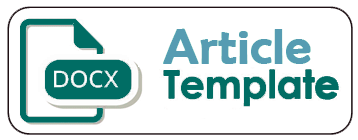A Diachronic Linguistics Study of Imperative Forms: From Seventeenth-Century Malay to Modern-day Indonesian
DOI:
https://doi.org/10.32497/jolali.v3i1.5774Abstract
This article studies provides an example of how a research in diachronic linguistics can be carried out. By looking at imperative sentences written in Sourat ABC, a seventeenth-century Malay text this study reveals that there are elements in the Malay language that continues to be used in the Indonesian language today, and there are also elements that are no longer in use. One of the reasons why certain forms are dropped is for the sake of simplification. Cumbersome and clunky affixations morphed into more simplified construction as the language underwent changes and adaptation.
References
Alcazar, Azier and Mario Saltarelli (2014). The Syntax of Imperatives. Cambridge:
Cambridge University Press.
Cambell, Lyle (2013). Historical Linguistics: An Introduction (3rd edition). Edinburgh:
University of Edinburgh Press.
Groeneboer, Kees (1998). “Politik Bahasa di Nusantara pada Masa VOC.” In A. H.
Sham, M.
Hart, & K. S. Wong (eds), Pengajian Melayu Bersumberkan Belanda (pp. 117-132).
Kuala Lumpur: Akademi Pengajian Melayu University Malaya dan Perbadanan
Muzium Melaka.
Joseph, Brian (1992). “Diachronic Explanation: Putting Speakers Back into the
Picture.” In
Davis, G. K., & Iverson, G (eds), Explanation in Historical Linguistics (pp. 123-144).
Amsterdam: John Benjamins Publishing Company.
King, Robert (1969). Historical Linguistics and Generative Grammar. New Jersey: Prentice
Hall, Inc.
Lass, Roger (1997). Historical Linguistics and Language Change. Cambridge: Cambridge
University Press.
Ruyl, Albertus (1611). Sourat ABC, Akan meng ayd”™jer anack boudack seperty deayd”™jern”™ja
capada segala manousia Nassarany: daen berbagy sombahyang Christiaan. Amsterdam: VOC.
--------------------- (1682). Sourat ABC, Jang bergouna banja capade anac bouda bouda.
Amsterdam: Paulus Matthys.
Downloads
Published
Issue
Section
License
Authors who publish with this journal agree to the following terms:- Authors retain copyright and grant the journal right of first publication with the work simultaneously licensed under a Creative Commons Attribution License that allows others to share the work with an acknowledgement of the work's authorship and initial publication in this journal.
- Authors are able to enter into separate, additional contractual arrangements for the non-exclusive distribution of the journal's published version of the work (e.g., post it to an institutional repository or publish it in a book), with an acknowledgement of its initial publication in this journal.
- Authors are permitted and encouraged to post their work online (e.g., in institutional repositories or on their website) prior to and during the submission process, as it can lead to productive exchanges, as well as earlier and greater citation of published work (See The Effect of Open Access).





